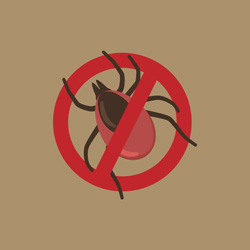 When you're heading outside, take a moment to prepare for ticks. Ticks will hitch rides on animals and humans. A tick bite can lead to illness, including Lyme disease.
When you're heading outside, take a moment to prepare for ticks. Ticks will hitch rides on animals and humans. A tick bite can lead to illness, including Lyme disease.
How to avoid ticks and bites
• Don't walk through high grasses, brushy areas or fallen leaves. Stay on the center of trails.
• Go outdoors often? Treat your clothing with a tick repellant that has permethrin. That way you don't have to put a bug repellent like DEET on your skin.
• Check your clothing for ticks when you come inside. Remove unattached ticks and throw your clothes into a hot dryer for at least 10 minutes.
• Check your dog and other outdoor-venturing pets daily. Ask your vet to recommend tick-protection products.
• Shower to wash off unattached ticks.
• Check your body for ticks. Use a mirror to make it easier.
Tick-proof your property
Many people get ticks from their own yard. Mow frequently and reduce tall grasses, brush and leaf piles. Remove old furniture and other large trash items where ticks can hide. Check with local officials to weigh the benefits and risks of pesticides.
How to remove a tick
Sometimes, tick bites happen. To remove one:
1. Grasp the tick as close to the skin's surface as possible with clean tweezers or a tick-removal device.
2. Use steady, even pressure to pull the tick up and out of your skin. Don't twist or jerk the tick. That can cause part of the tick to stay in the skin. If that happens, use the tweezers to remove them. If you can't, it'll heal if you leave it alone.
3. Use rubbing alcohol or soap and water to clean the bite area.
4. Don't crush a live tick. Put it in alcohol or a sealed bag or container or flush it down the toilet.
Seek care soon if you:
• Can't remove the tick.
• Live in an area known to have many cases of Lyme disease.
• Haven't had a tetanus shot in 10 years.
• Get a rash or fever within 2 to 14 days after the bite.
• See swelling or redness that spreads.
• Feel weak and your face, eye or mouth droops.
• Have an attached, swollen deer tick for more than 36 hours.
Sources: American Academy of Pediatrics; Centers for Disease Control and Prevention